What are Automated Rules?
The automated rules feature – found in the editor for every group – allows you to set intelligent criteria that builds groups for you as you add and update items. For example, if you had a number of items with a “Best Sellers” tag, you could use automated rules to build a group that only includes items with that tag. In just a few clicks, you would have a Best Sellers group that grows whenever you apply that “Best Sellers” tag to an item, giving your customers a really useful group consisting of your most popular items.
If you are unclear about automated rules, read this article before going further to learn the fundamentals behind using the feature.
1) Affordable Items Group
Most people will take interest in a group advertising cheap or affordable items – especially as we lurch ever closer towards total post-pandemic economic ruin – so it makes sense to use the automated rules feature to highlight the cheaper items on your ecommerce website.
An easy way of doing this is by setting your metric as Price, your condition as is less than, and then putting a figure like £50, depending on your price range. That way, you have a group featuring all items underneath a certain price. Customers looking to save money will therefore be immediately attracted to this group.
You could, additionally, apply a “Sale” tag to items in your shop that are, for a brief period, much cheaper than usual. This combination gives customers a useful group where they can locate items within their modest price range.
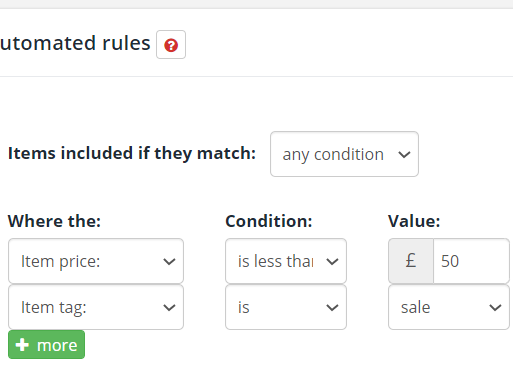
2) Item Type Group
You may have an ecommerce website that sells clothing or consumables whereby the items notably vary in their exact type. Shoes as opposed to t-shirts, for example, or spices as opposed to pastes. In this instance, it makes a great deal of sense to build a group dedicated to different item types. And with automated rules, you can do exactly that. If I had a clothes shop, I would use automated rules to create a group containing only items with the item type of “Dresses”, so that customers could look at all my dresses in one convenient place.
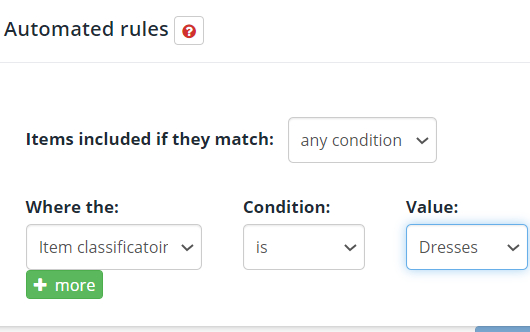
3) Discount/Deals Group
A great way of attracting customers to your items is through creating a group dedicated to discounts or offers on your website. You could offer discount vouchers, of course, and advertise via a pop-up. A more common way of tempting customers to look at your items, though, is through applying bulk discounts.
For example, you may have five or six items with a 30% bulk purchase discount, meaning that orders of two or more get 30% off. In this sense, automated rules could be used to create a group containing only items with 30% discount. You could do a broader group for items with a 10% discount or more, or simply have a group of all items with any kind of bulk discount applied to them. With automated rules, the choices are endless.
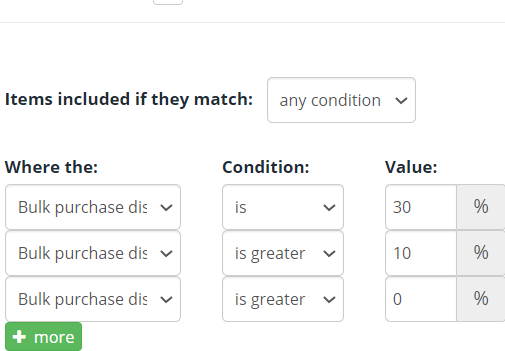
4) Going Out of Stock Group
A great way of getting customers to look at your ecommerce website and purchase your items is through creating a sense of urgency. Advertisers, for years, have found a million different ways to say, “Buy it NOW!” And with automated rules, there is a delightfully simple way of tapping into that lucrative feeling of the customer being in a hurry or worrying about missing out.
All you need to do is manage stock levels across your items. You then use automated rules to build a group containing only items whose stock has gone below 10 or maybe even five items. Name the group “Going Out of Stock Fast!” with a description highlighting that there are only a handful left before they disappear from your shelves, and suddenly you have a very appealing group.
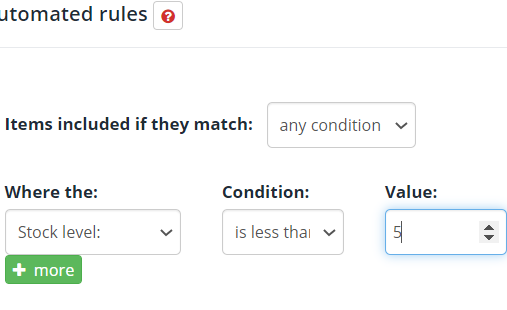
5) Advanced Group
Once you get familiar with automated rules, you will be overwhelmed by the sheer range of possibilities for building extremely detailed groups that apply perfectly to your items and jump out at customers. A good example one of these advanced groups would be called “Super Cheap Luxury Dresses”. You could use automated rules to stipulate that all items in the group:
- Have the item type “Dresses”
- Have the “Luxury” tag applied to them
- Cost between £40 and £100
- Have a 30% discount
By setting all these rules, you have given the group a sense of real personality. Customers see the many characteristics of this group – luxury dresses, cheap, currently with a bulk discount – and get excited. You can build all kinds of groups like these that are based on the nature of your items.
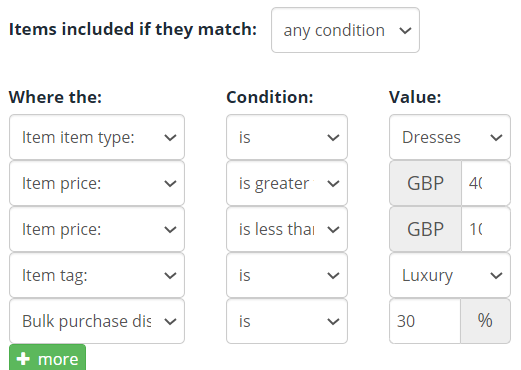
Why do thousands of
business owners
trust DotGO?
It starts with just one click

